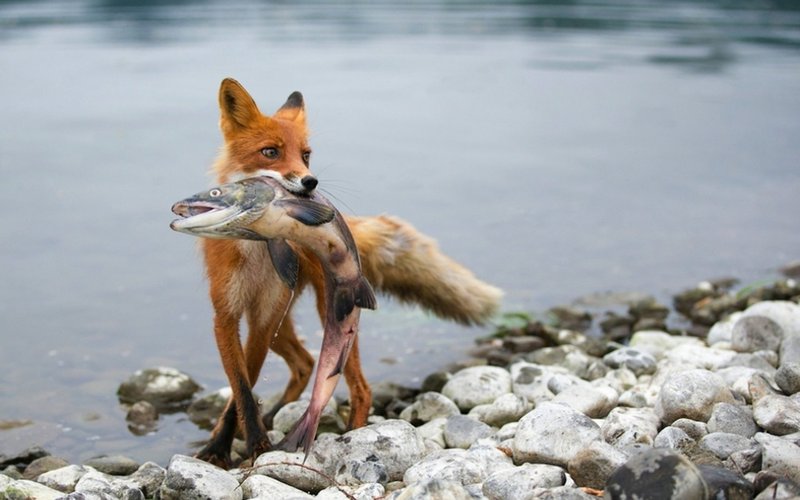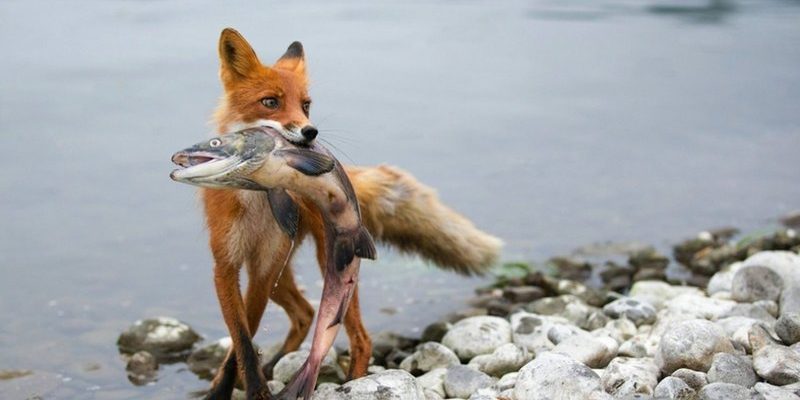
Imagine a fox as nature’s multitasker. Just as we juggle different tasks throughout our day, foxes are opportunistic eaters, meaning they’ll go for whatever food source is available. Depending on their habitat and the season, their diets can vary significantly. Interested in learning more about these crafty animals? Let’s dive deeper into their diets and hunting tactics.
Understanding the Fox’s Diet
Foxes are renowned for being omnivores, which means they consume both animal and plant matter. This diet versatility is key to their survival and reflects their adaptive nature. Foxes mainly feed on small mammals like rodents, rabbits, and even birds. They’re not picky eaters, though. In fact, they have been known to munch on fruits, vegetables, and insects, especially when animal prey is scarce.
In urban settings, their diet can get even more diverse. Think about it: they might scavenge from trash, feast on pet food left outside, or even hunt pigeons in parks. This adaptability is a huge strength. If one food source dries up, they simply switch to another. It’s a bit like how we adapt our diets based on what’s available in our kitchens.
Additionally, the seasonal changes play a huge role in what foxes eat. In spring and summer, they might feast on plenty of fruits and insects. However, as autumn rolls in, their focus shifts back to hunting small mammals. This instinctual dietary shift helps foxes stock up on fat reserves to prepare for the leaner winter months. Just like us, they need to plan their meals based on what’s available.
Hunting Strategies: The Art of Stalking
Foxes are incredibly skilled hunters. You might think they just dash after their prey, but there’s a lot more finesse involved. The primary technique they use is called stalking. Imagine sneaking up on a friend for a surprise—this is pretty much how foxes approach their meals.
They start by using their keen senses to locate potential prey. With their acute hearing and sharp eyesight, they can detect even the faintest rustle of a mouse hiding in the grass. Once they’ve spotted their target, they employ a low crouch to keep themselves hidden. It’s all about staying out of sight until the perfect moment to pounce.
When the time comes, they utilize a method called leaping to catch their prey off guard. This quick leap allows a fox to cover distance rapidly, often catching small animals unprepared. It’s a little like how you might leap up when a doorbell rings unexpectedly. This tactic, combined with their natural agility, makes foxes formidable hunters.
Using Their Environment: The Fox’s Advantage
Another key aspect of the fox’s hunting strategy is their ability to use the environment to their advantage. They’re known for being incredibly perceptive, often adjusting their hunting techniques based on the landscapes they roam. For example, in open fields, they might rely more on sprinting and agility, while in wooded areas, they may opt for more stealthy approaches.
Foxes are also opportunistic hunters. This isn’t just a fancy way of saying they take advantage of every opportunity—they actively watch for signs of other predators. If a larger animal, like a coyote, makes a kill, a fox might swoop in to grab leftovers. It’s a smart strategy that shows their resourceful nature. It’s kind of like when you find a great deal on last season’s style at a clearance rack!
Moreover, their social dynamics can play a role in hunting as well. While they often hunt alone, young foxes may learn from watching their parents. This passed-down knowledge allows them to refine their skills and optimize their strategies in different environments.
The Role of Scent in Hunting
Here’s an interesting fact: foxes have an exceptional sense of smell—much better than ours! This olfactory prowess plays a crucial role in helping them find food. They can sniff out prey hiding underground or even beneath snow, which is especially handy during colder months.
When they hunt, they often rely on their noses to track scents and determine the best approach. This is similar to how you might follow a whiff of freshly baked cookies to find the kitchen. They use this ability to locate nearby animals and learn about their movements and habits.
In addition to helping with hunting, scent is also essential for communication. Foxes mark their territory with scent markings, which helps them establish boundaries and signal their presence to other foxes. This is particularly important in areas where food might be scarce, as it reduces competition. It’s like when you claim a spot on the couch during a movie night—it sets the stage for the best seat in the house!
Seasonal Adaptations in Diet and Hunting
As seasons change, so do the dietary needs and hunting tactics of foxes. During spring, they have a diverse menu since small mammals are plentiful and fruits begin to ripen. This season is often considered the high point of their hunting activities because they can easily find food.
Moving into summer, foxes shift their focus slightly. With greater availability of insects and fruits, they may supplement their meals by becoming more opportunistic scavengers. They often indulge in berries and other seasonal delights, which provide necessary vitamins and energy.
When fall hits, the quest for food intensifies again as foxes prepare for winter. They ramp up their hunting efforts to store enough fat. You could say it’s a bit like our own desire to stock up on favorite snacks for a cozy movie night in, knowing winter may bring limited opportunities to go out.
Finally, in winter, their hunting strategies adapt to the snowy terrain. They may use their incredible leaping ability to dive through the snow to surprise their prey hiding beneath. While it can be a challenging time for food, they continue their resourceful ways to survive.
The Impact of Environment on Hunting Efficiency
The environment plays a massive role in a fox’s hunting efficiency. Different landscapes present various challenges and opportunities. In urban areas, for instance, foxes may have to navigate human activity while hunting. This can lead to a unique set of behaviors where they hunt during the night when activity is minimal.
Rural and forested settings allow for more natural hunting techniques, like stalking and pouncing in open fields. Here’s the thing: their surroundings not only influence their hunting strategies but also their diet—urban foxes might eat more scraps, while those in the wild primarily hunt. They’re true survivors, adapting seamlessly to whatever life throws their way.
Additionally, habitat destruction and changes in food availability due to climate change can impact how effectively foxes hunt. If their primary prey is declining, they will have to adapt quickly. This flexibility is crucial for their survival, demonstrating just how resilient these animals can be.
In conclusion, the diet and hunting strategies of the fox are a testament to their adaptability and intelligence. From their varied meals to their clever hunting techniques, these creatures are always finding new ways to thrive in a constantly changing world. Their ability to use their environment, adjust their diets with the seasons, and capitalize on their senses sets them apart as some of nature’s most fascinating and resourceful animals. Whether you spot one in your backyard or learn about them in a documentary, remember that these sly creatures have a lot more going on than meets the eye.

